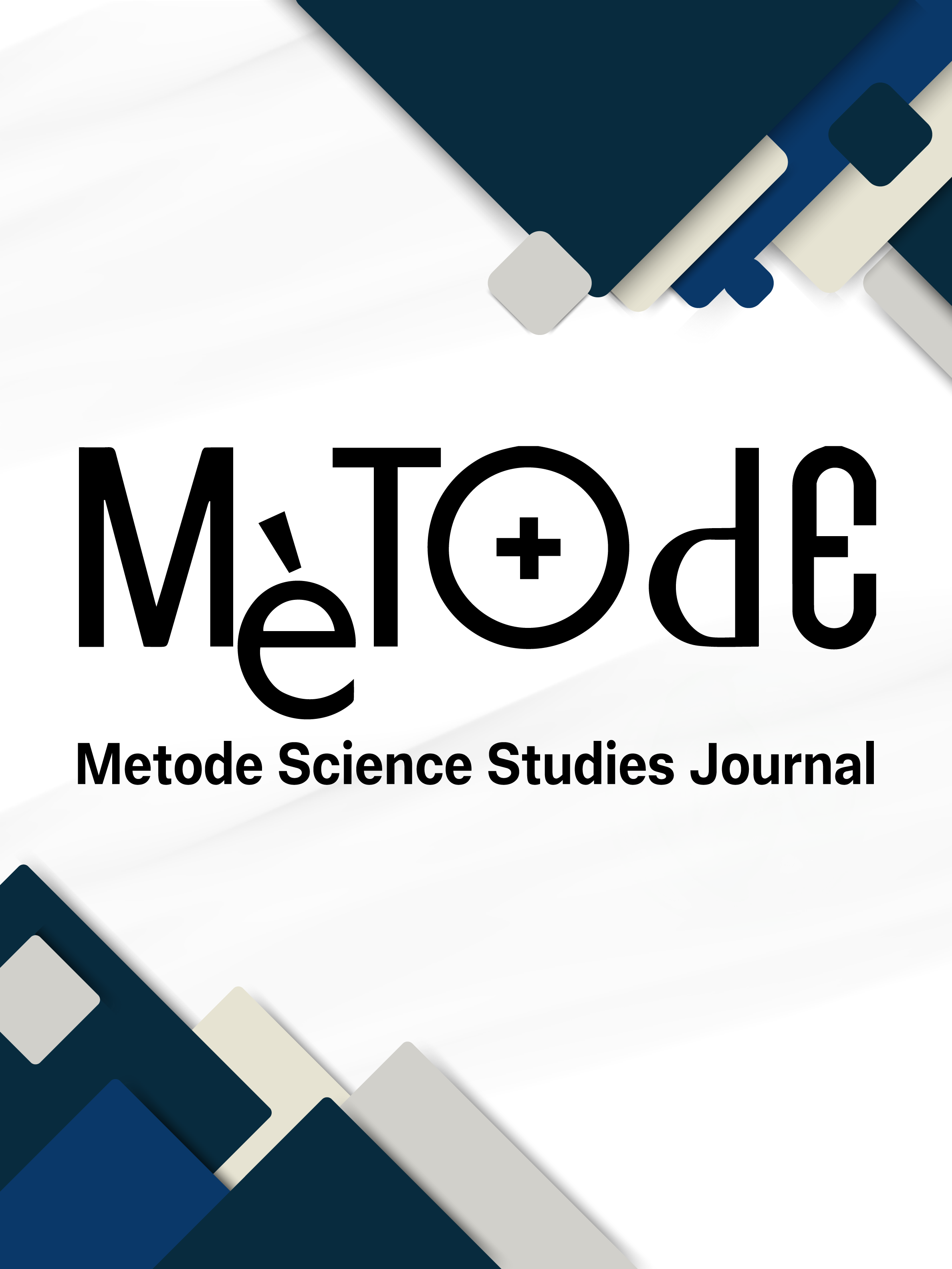Perovskite solar cells
Towards the net zero scenario
DOI:
https://doi.org/10.7203/metode.15.28390Keywords:
perovskite solar cells, metal halide perovskites, solar photovoltaics, perovskite-silicon tandem cells, net zero emissions Abstract
Abstract
At present, there is an urgent need to reduce greenhouse gas emissions to mitigate the climate change that threatens humanity and our planet’s ecosystems. A way to achieve this is by increasing renewable energy production, where solar photovoltaic plays a key role. However, the current commercial crystalline silicon photovoltaic technology might not be enough to achieve the required targets. In this work, we describe the latest advances of an emerging photovoltaic technology known as perovskites. In just ten years of development perovskite solar cells have matched the performance of current commercial crystalline silicon. Here, we outline how to scale and improve the stability of perovskite solar cells as well as examples of applications such as their integration with silicon solar cells, semitransparent solar cells, and their use in outer space.
 Downloads
Downloads
 References
References
Adinolfi, V., Peng, W., Walters, G., Bakr, O. M., & Sargent, E. H. (2018). The Electrical and Optical Properties of Organometal Halide Perovskites Relevant to Optoelectronic Performance. Advanced Materials, 30(1), 1700764. https://doi.org/https://doi.org/10.1002/adma.201700764
Ávila, J., Momblona, C., Boix, P. P., Sessolo, M., & Bolink, H. J. (2017). Vapor-Deposited Perovskites: The Route to High-Performance Solar Cell Production? Joule, 1(3), 431–442. https://doi.org/https://doi.org/10.1016/j.joule.2017.07.014
Basumatary, P., & Agarwal, P. (2022). A short review on progress in perovskite solar cells. Materials Research Bulletin, 149, 111700. https://doi.org/https://doi.org/10.1016/j.materresbull.2021.111700
Fakharuddin, A., Gangishetty, M. K., Abdi-Jalebi, M., Chin, S.-H., bin Mohd Yusoff, A. R., Congreve, D. N., Tress, W., Deschler, F., Vasilopoulou, M., & Bolink, H. J. (2022). Perovskite light-emitting diodes. Nature Electronics, 5(4), 203–216. https://doi.org/10.1038/s41928-022-00745-7
Herz, L. M. (2017). Charge-Carrier Mobilities in Metal Halide Perovskites: Fundamental Mechanisms and Limits. ACS Energy Letters, 2(7), 1539–1548. https://doi.org/10.1021/acsenergylett.7b00276
Lee, J., Lee, K., Kim, K., & Park, N.-G. (2022). Vacuum-Processed Perovskite Solar Cells: Materials and Methods. Solar RRL, n/a(n/a), 2200623. https://doi.org/https://doi.org/10.1002/solr.202200623
Liang, Z., Zhang, Y., Xu, H., Chen, W., Liu, B., Zhang, J., Zhang, H., Wang, Z., Kang, D.-H., Zeng, J., Gao, X., Wang, Q., Hu, H., Zhou, H., Cai, X., Tian, X., Reiss, P., Xu, B., Kirchartz, T., … Pan, X. (2023). Homogenizing out-of-plane cation composition in perovskite solar cells. Nature, 624(7992), 557–563. https://doi.org/10.1038/s41586-023-06784-0
Longi. (2023). LONGi sets a new world record of 33.9% for the efficiency of crystalline silicon-perovskite tandem solar cells. https://www.longi.com/en/news/new-world-record-for-the-efficiency-of-crystalline-silicon-perovskite-tandem-solar-cells/
Malinkiewicz, O., Yella, A., Lee, Y. H., Espallargas, G. M., Graetzel, M., Nazeeruddin, M. K., & Bolink, H. J. (2014). Perovskite solar cells employing organic charge-transport layers. Nature Photonics, 8(2), 128–132. https://doi.org/10.1038/nphoton.2013.341
Manser, J. S., Christians, J. A., & Kamat, P. V. (2016). Intriguing Optoelectronic Properties of Metal Halide Perovskites. Chemical Reviews, 116(21), 12956–13008. https://doi.org/10.1021/acs.chemrev.6b00136
Messmer, C., Goraya, B. S., Nold, S., Schulze, P. S. C., Sittinger, V., Schön, J., Goldschmidt, J. C., Bivour, M., Glunz, S. W., & Hermle, M. (2021). The race for the best silicon bottom cell: Efficiency and cost evaluation of perovskite–silicon tandem solar cells. Progress in Photovoltaics: Research and Applications, 29(7), 744–759. https://doi.org/https://doi.org/10.1002/pip.3372
Paliwal, A., Zanoni, K. P. S., Roldán-Carmona, C., Hernández-Fenollosa, M. A., & Bolink, H. J. (2023). Fully vacuum-deposited perovskite solar cells in substrate configuration. Matter, 6(10), 3499–3508. https://doi.org/https://doi.org/10.1016/j.matt.2023.07.011
Raza, E., & Ahmad, Z. (2022). Review on two-terminal and four-terminal crystalline-silicon/perovskite tandem solar cells; progress, challenges, and future perspectives. Energy Reports, 8, 5820–5851. https://doi.org/https://doi.org/10.1016/j.egyr.2022.04.028
Rodkey, N., Gomar-Fernández, I., Ventosinos, F., Roldan-Carmona, C., Koster, L. J. A., & Bolink, H. J. (2024). Close-Space Sublimation as a Scalable Method for Perovskite Solar Cells. ACS Energy Letters, 927–933. https://doi.org/10.1021/acsenergylett.3c02794
Zhang, H., Ji, X., Yao, H., Fan, Q., Yu, B., & Li, J. (2022). Review on efficiency improvement effort of perovskite solar cell. Solar Energy, 233, 421–434. https://doi.org/https://doi.org/10.1016/j.solener.2022.01.060
Downloads
Published
How to Cite
-
Abstract4
-
PDF1
Issue
Section
License
Copyright (c) 2024 CC BY SA

This work is licensed under a Creative Commons Attribution-ShareAlike 4.0 International License.
![]()
All the documents in the OJS platform are open access and property of their respective authors.
Authors publishing in the journal agree to the following terms:
- Authors keep the rights and guarantee Metode Science Studies Journal the right to be the first publication of the document, licensed under a Creative Commons Attribution-NonCommercial-NoDerivatives 4.0 International License that allows others to share the work with an acknowledgement of authorship and publication in the journal.
- Authors are allowed and encouraged to spread their work through electronic means using personal or institutional websites (institutional open archives, personal websites or professional and academic networks profiles) once the text has been published.





